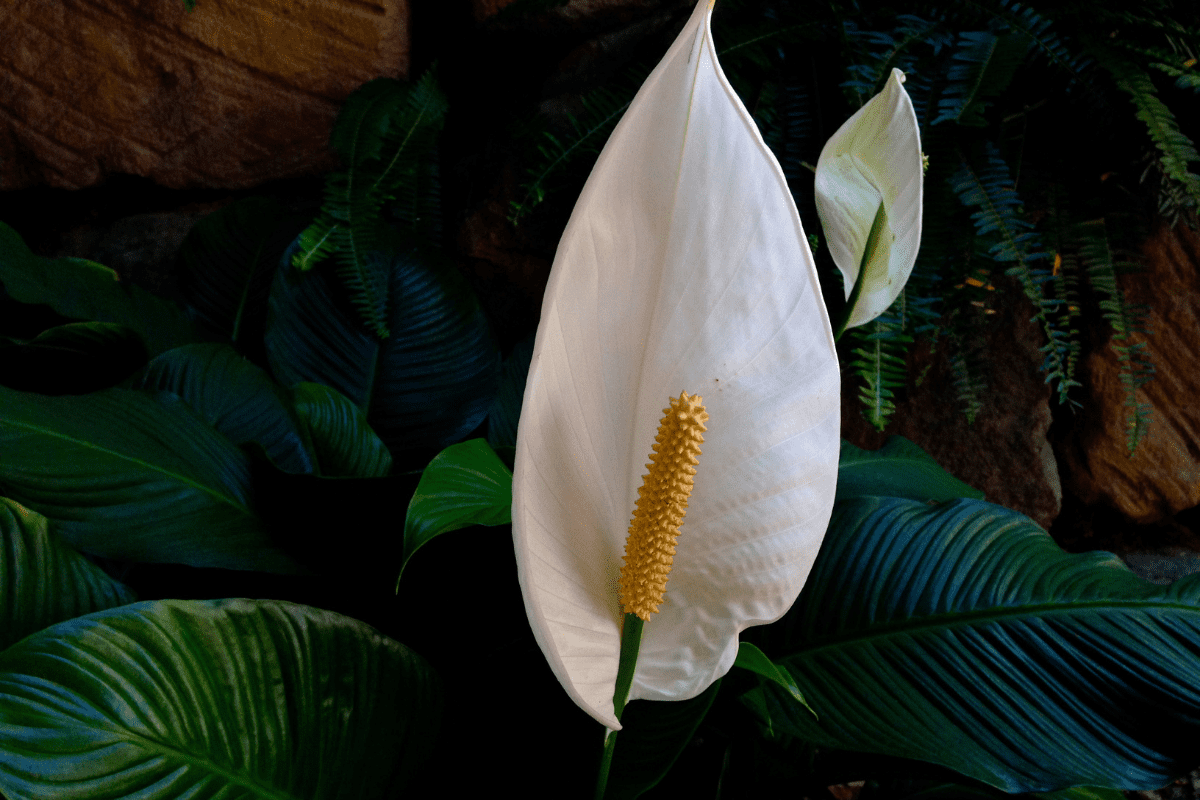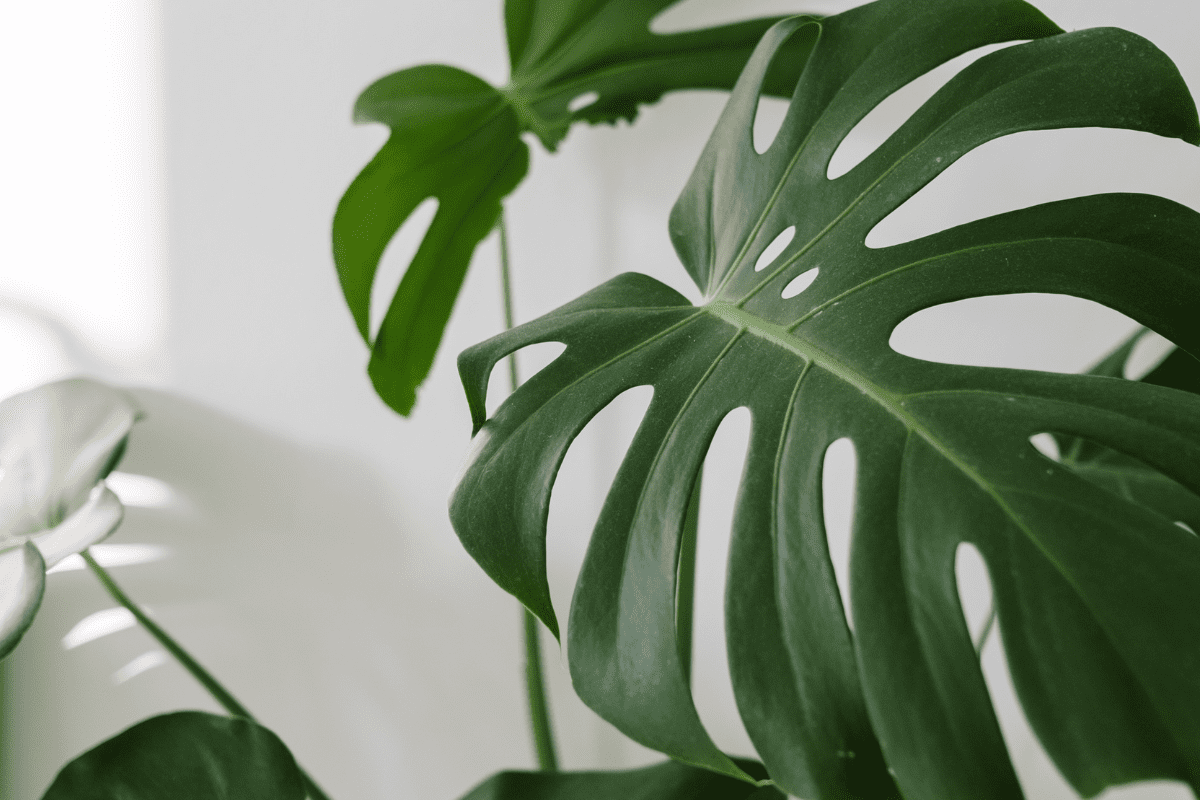Incorporating plants into your interior design is one of the simplest and most effective ways to embrace biophilic design. Plants bring beauty to a space and offer numerous health benefits, including improved air quality, stress reduction, and increased productivity.
Whether you’re designing a home, office, or commercial space, choosing the right plants can enhance the atmosphere and connect the environment to nature.
Here are some of the best plants for biophilic interiors that will thrive in various settings. If you need a hand creating a biophilic haven for your office, please reach out to our team of experts, who have years of experience in creating calming spaces through plants.
Snake plants: low-maintenance elegance
The snake plant (Sansevieria), also known as mother-in-law’s tongue, is a top choice for biophilic interiors thanks to its resilience and ability to thrive in low-light conditions. This low-maintenance plant is ideal for both home and office environments where you might not have abundant natural light.
Snake plants are also excellent air purifiers. Their presence can even remove toxins such as formaldehyde and benzene from the air, which can help create a healthier indoor environment. Their tall, sleek leaves add a touch of elegance, making them perfect for minimalist spaces.
Our top tips for care:
- Place snake plants in low-light areas, such as corners or corridors.
- Water sparingly, as they prefer dry conditions and are drought-tolerant.
Peace lilies: beauty and purification
Peace lilies (Spathiphyllum) are another popular option for biophilic design because of their graceful appearance and powerful air-purifying abilities. They are known for their broad, glossy leaves and stunning white flowers that bloom throughout the year, adding both beauty and serenity to any space.
Peace lilies are particularly effective at removing harmful indoor pollutants, making them a fantastic choice for offices, homes, or commercial settings where air quality is a concern. As they thrive in indirect light and don’t require frequent watering, they are a low-maintenance yet attractive option for indoor spaces.
Our top tips for care:
- Keep peace lilies in areas with indirect sunlight.
- Water regularly, but avoid overwatering as they don’t like sitting in soggy soil.
Pothos: versatile and easy to grow
Pothos (Epipremnum aureum), sometimes known as devil’s ivy, is a highly adaptable and easy-to-grow plant that fits perfectly with the biophilic design ethos. Its trailing vines make it ideal for hanging baskets, shelves, or as a cascading feature on top of cabinets. With its vibrant green leaves, pothos adds a lush, tropical feel to any interior.
Pothos can thrive in a range of light conditions, from low light to bright indirect light, making it one of the most versatile plants for indoor biophilic design. It’s also highly tolerant of neglect, so even if you forget to water it occasionally, it will still flourish.
Our top tips for care:
- Hang pothos in areas where you want to create a cascading effect.
- Water when the soil feels dry, but it’s quite tolerant of irregular watering schedules.
Rubber plants: bold and dramatic
For a more dramatic statement, rubber plants (Ficus elastica) are an excellent choice. These plants have large, glossy leaves that make a bold impact in any interior. Rubber plants are known for their air-purifying abilities, making them ideal for workspaces or living areas where indoor air quality is important.
Although rubber plants prefer bright, indirect light, they can tolerate lower light conditions, making them adaptable to different environments. Their striking appearance can serve as a central feature in your biophilic interiors, adding height and volume to your design.
Our top tips for care:
- Place rubber plants in well-lit areas for optimal growth, but avoid direct sunlight.
- Wipe their large leaves regularly to keep them dust-free and shiny.
Ferns: natural texture and freshness
Ferns bring an element of freshness and texture to biophilic interiors. With their delicate, feathery fronds, ferns are perfect for creating a soft, organic look. There are many types of ferns to choose from, including the Boston fern and maidenhair fern, both of which are popular for indoor spaces.
Ferns thrive in humid environments, so they are perfect for areas like bathrooms or kitchens where moisture is more prevalent. They also work well in hanging baskets or as part of a vertical garden, helping to bring nature into smaller spaces or urban settings where floor space is limited.
Our top tips for care:
- Place ferns in areas with indirect light and higher humidity, such as bathrooms.
- Mist regularly to maintain moisture levels, especially in drier rooms.
Monstera: tropical flair for larger spaces
The Monstera deliciosa, also known as the Swiss cheese plant, is a favourite among interior designers for its dramatic, tropical aesthetic. Its large, perforated leaves make it a stunning centrepiece for living rooms, lobbies, or offices, creating an instant connection with nature.
The Monstera thrives in bright, indirect light but can tolerate lower light conditions. It’s a fast-growing plant, so it’s well-suited for larger spaces where you want to add volume and an impressive natural focal point. The Monstera’s striking appearance makes it a statement plant in any biophilic interior.
Our top tips for care:
- Place in a well-lit room with indirect sunlight to encourage growth.
- Water when the top layer of soil dries out, but avoid overwatering.
- Remember that in the wild, the Monstera grows out the way, not up, so to have a lush and tall plant, you’ll need to give the Monstera something to grow up like a moss pole.
Why are plants essential for biophilic interiors?
By introducing greenery into your indoor spaces, you’re not only improving air quality but also enhancing the overall atmosphere, reducing stress levels, and promoting wellness.
Plants also help to soften the edges of man-made environments, providing a natural balance that can make any space feel more welcoming and alive. Whether you’re designing a home, an office, or a commercial interior, choosing the right plants can help create a connection with nature that’s essential to biophilic interiors.
Get in touch today to find out how we could transform your office spaces.
Or, why not stay up to date with Fleurtations on LinkedIn?







